Another sunny day beautified the kingdom.
Lewis and I woke to sunbeams streaming through our tall windows. We went downstairs to use the gym. Those lower corridors were narrow but historically accurate.
In the hotel's breakfast room, the skylight let rays of sun reflect off the chafing dishes, carafes, and the perfectly-shined silverware that was laid on every table.
As we left the hotel, I was tempted by the nearby coffeeshop.
But I was fortified from our hotel's exquisite latte-machine, and I anticipated an espresso from an acclaimed place near the pier.
As we ventured into another bright day in the capital of Norway, we realized that many people wore colorful outfits. Coming from NYC where too many people constantly wear black, it was a cheery change.
We also noticed an absence of people lazily wearing pajamas in public. That happens too much in America throughout the year.
Norway possesses Scandinavia’s most-spectacular coastline: 62,706 miles (28,953 km) along numerous islands, inlets, and peninsulas. King Harald's realm has one of the longest coastlines of any nation. The capital abuts four the 1,190 fjords.
Norwegian fjords are the most amazing in the world. Fjords are different than bays. Those long, twisted canyons formed when glaciers scoured and carved the mountainside, which eventually filled with seawater. That occurred during the last Ice Age. According to a legend, some of the mammoth shapes are the bones of giants who were slain by the Nordic god named Odin.
Spreading almost 100 miles inland, the fjords have a depth that stretches down more than 3,000 feet! Incredibly, they match the mountains that surround them, whose sheer walls rise 3,000 feet! Their depth was carved when glaciers retreated—similar to dragging your fingers through sand. Astoundingly, they are as deep as the mountains are tall! Kayakers might not realize that as they are bobbing on the surface.
Norway's rugged coast—with many outlets to the ocean—spurred the Viking’s seafaring culture. Nowadays, fjords are enjoyed by boaters, divers, deep-sea explorers, mountaineers, rock climbers, skydivers, and base-jumpers. Due to their unusual depth, the fjords allow deep-sea creatures to get near the shore. Sea Cucumbers emerge along the coast to gorge themselves. Starfish use the vibrancy of the underwater current for mating. Ghost sharks hunt for shellfish along the seabed—easily detecting the electric currents produced by their prey. Tides churn the shallower water into a feast of plankton that are consumed by swarms of jellyfish. In turn, those jellyfish provide shelters for smaller fish who evade predators.
The west coast of the kingdom is buffered from the turbulent Atlantic Ocean by thousands of small islands. Those archipelagos act as storm barriers. White-tailed Sea Eagles hunt for fish on those shores. Flying with 8-foot wingspans, they swoop down for prey at speeds of 40-miles-per-hour! Folklore says that Odin transformed himself (shape-shifted) into those birds when necessary. Huge black-and-white Orcas hunt for herring and spin them into towering cyclones of frightened fish. Humpback Whales follow the Orcas to consume food, too. Thus, Earth’s largest mammals and tiniest sea dwellers congregate in the same areas. That is the abundance of Norway!
After centuries, it remains a serene activity to sail around the fjord and be in awe of Nature's majesty. We did it, too.
Our day-trip involved a catamaran, seen below, so we headed to the wharf. (It is the most high-tech and eco-friendly one in the nation).
Once again, we valued our hotel’s prime location and the walkability of Oslo.
We returned to the pier where Ling Ling was. Already, Aker Brygge was bustling with folks breakfasting at kiosks, food trucks, and waterfront restaurants.
The long-distance ferries, named King, Queen, and Prince, delivered workers to the city from places far south along the fjord. Those high-speed ferries operate all-day between Oslofjord and Nesodden (six kilometers apart).
We saw our boat and stopped in amazement. Sleekly designed, it had a zigzag construction that allowed three levels.
The company that owns the ship is Brim Explorer, a nautical sightseeing company that provides fjord excursions. We stepped aboard its flagship, the M.S. Brim. “Brim” is an Old Norse term for “Breaking Wave”. The ship was launched in 2019. That is correct: during the COVID health pandemic, Norway spearheaded eco-friendly transportation… while America’s tax-paid leadership pretended that coal was a “clean” source of energy. The company created the first non-polluting cruise boat in Nordic waters. The company’s other goal was to build ships that were ultra-quiet and never gave noise pollution to disturb sea creatures in fjord. They succeeded with trailblazing feats of engineering! Norway has a long reputation of sterling-quality shipbuilding, so it’s not surprising that it continues to break barriers.
Propelled by a hybrid-electric motor, is glided smoothly over the waves. Its energy-efficient batteries can be recharged at any port to provide 10 hours of sailing at 10 knots. The ship was constructed with recyclable aluminum by award-winning designer Einar Hareide. We never saw a ferry or sightseeing boat as smartly-beautiful as that! Within the vastness of America, such boats are unchanged in designs since the 1930s, and companies greedily overfill their boats with customers so that views are obscured. The ship can accommodate 140 passengers. Nonetheless, Brim Explorer prioritizes “customer experience”; its boats have innovative structures so when people stand on the decks, they don’t obscure the views from the windows. That is achieved by staggered levels! Clever.
Brim demonstrates a progressive approach to sustainable exploration because its electric engines are purely silent and emission-free. That’s wonderful! (and typical of Scandinavia).
(Compare that to NYC’s unimproved Staten Island ferries that guzzle fossil fuels and belch pollutive exhaust, despite being in the wealthiest city in America).
Brim Explorer preserves the serenity of the kingdom’s coastal regions, and their forward-thinking ships are unique in the world. Thanks to Norway's conservation efforts, the fjords will become the world’s first “zero emission” area at sea. Being emission-free means that all ships must be electric.
The co-founders of Brim Explorer include an Icelandic woman whose family owned a whale watching company and a Norwegian fellow who is enamored with making things work. The food sold on their ships comes from environmentally-certified vendors who use minimal packaging and recyclable materials. To the greatest possible degree, they use local suppliers, so that minimizes shipping byproducts. Cleaning products used on the ships involve natural substances and eco-friendly substances.
Uniformed in white with gold-braid epaulettes, the Norwegian captain welcomed us aboard and confirmed our names on his roster. We entered the air-conditioned salon, which had a bar/coffee area, green leather banquettes and cushioned wood chairs.
We went upstairs to the mid-deck and took seats inside that salon. Typical of Scandinavian hospitality, every table was adorned with a flameless candle and a bud vase.
The front glass angled forward, overlooking the bow of the ship and give it a profile of forward momentum.
Sensing that I had spare time, I asked the captain if I could dash into the coffeeshop across from Ling Ling. As expected, he nonchalantly said, “We sell coffee onboard.” With a sparkle in my eyes, I replied, “We dined at Statholdergaarden, and their captain (dining room captain) told me to definitely try coffee from European Roasters.” Unmoved by my interest to support a local business, the ship’s captain shrugged and responded, “Ten minutes will not be enough time. They’ll be there when we get back. Go then.” I agreed. However, 15 minutes later, he came to me specifically to say, “I have a bad conscience now because I said No to you, but we still have to wait here for late passengers.” Despite making us late, we still left without them.
18 passengers joined us, and two crew members hoisted ropes from the moorings, so we could get underway.
Our day-trip began sublimely. As I said, the ship is a catamaran, so it avoids friction and minimizes noise/vibration. Propulsion was the smoothest and quietest that we ever experienced. Please watch my video taken above the propellors, and turn the sound on the hear the unbelievable quietness...
Neither Lewis nor I ever heard a ship as quiet as that!
Brim floats higher in the water, so it gains access to the tightest coves and shallower parts of the fjord for greater site-seeing opportunities.
We “set-sail” into the fjord and voyaged to the inlets that are west of the city.
A blonde ponytailed crew member used a microphone—and perfect English diction—to inform people (on all decks) about the sights and historical sites. It made our aquatic adventure extra interesting.
During our tour of the fjord, our guide described old Norse folklore, coastal architecture, and fun facts about the fjord, which I relayed to you earlier.
Eventually, we sailed back to Aker Brygge and marveled at its stupendous architecture.
Coming ashore, I thanked them profusely and went to try a latte from Supreme Roastworks.
Satisfied with my perfect-tasting/looking latte, my senses were further delighted by the wafting aroma of wood fires, as Osloites savored their saunas and plunged into crystal-clear water of the fjord.
Seen above is example of the bronze statues that are placed randomly in the city. Yes, it's another bare-breasted woman.
Loving Oslo's dependable public transportation, Lewis and I rode a #12 tram westbound to the Elisenberg stop in the West End of Oslo.
We were in the Borough of Frogner.
We proceeded on foot along Elisenbergveien to a well-regarded Perfumery. They didn't have the fragrance that Lewis wanted (the one he smelled at Maaemo). Nonetheless, the area was beautiful, so we paced ourselves for a gentle stroll. It's how you envision an upstanding society to be.
You can't imagine the relief for us to walk in a clean neighborhood that was free of litter and discarded garbage. This is what it looks like to walk around NYC—every day of the year.
We adore Europe's cleanliness.
We also popped into a bakeshop to sample one of Norway's iconic pastries: Skolebrod. The sweet bun was flavored with cardamom, dusted with shaved coconut, and filled with custard. It was priced at 47 crowns, and it was tasty.
To stay hydrated, we bought a bottle of mineral water produced by Farris. It is Norway's oldest and most-popular producer, and its excellence was recognized with a Royal Warrant as Purveyor to the Royal Court of Norway. In nations with monarchs or sovereigns, a Royal Warrant is awarded to companies that are so good that they become official suppliers to royalty. Brands dream of having that type of publicity.
The whole area reminded us of the older parts of Berlin, which we visited, last year. It was well-conserved and well-kept.
*To see our time in Berlin, please use this link:
https://halfwindsorfullthrottle.blogspot.com/2022/11/our-trip-to-berlin-germany-part-4-of-6.html
Frogner was named for Frogner Manor, an estate from the Early-Middle Ages that encompassed the entire region. In the Middle Ages, it was taken as an ecclesiastical property belonging to Hovedøya Abbey (we saw the ruins earlier). In 1532, it was confiscated by the Crown and lent to burghers of Oslo as a grace-and-favor residence. The central part of the estate still exists as the City Museum within Frogner Park. Built in the 1750 by Major Hans Scheel, the manor house is dutifully preserved as the museum.
Near the Embassy of Greece, we crossed a prettily-paved tram stop and entered the park. We liked the orderly flow of traffic—leaving a greenway for trams to zoom on unimpeded.
Next on our agenda was visiting a Buddhist temple and Meditation Center named Kadampa Nordisk. We discovered it online and were interested to see it. It's situated in a lovely area.
Characteristic of Nordic style, there is a simple, wooden emblem above the doorway... instead of a gold one. Subdued.
When we opened the door, a discreet door chime sounded like twittering birds. The interior is smoothly furnished with a "carpenter's dream" of wood furniture.
It put the Buddhist temples in NYC to shame because NYC's lacks any chairs, never considers tables as important for guests, and its poverty-quality mismatched furniture is from 1983. This is what Buddhism looks like in America's richest city (where its Chinatown is repeatedly neglected)...
Suddenly, a black terrier scurried to our feet and gave a few welcoming barks. After her, the monk appeared, attired in the classic crimson/gold robes. His name was Sanglam. Here he is holding his "rescue dog".
By then, the Buddhism Center was empty, so we received his undivided attention. Full of cheery hospitality, he offered us tea, and he showed us a wooden tea caddy that was full of wholesome varieties.
While he fetched a toy to give his doggie, we perused the "retail area" that was pleasantly full of books, statuettes, incense sticks, pendants, and wisdom imprinted on bookmarks.
Zen mentality, yoga, and mediation are contributions from Eastern wisdom. Some people would call them truly invaluable. They fit very well with Nordic attitudes of Life/Work Balance.
We never saw that in any other country that we visited.
The tunnel between Majorstuen Station and Nationaltheatret Station was dug in 1928. That's impressive for New Yorkers like us because half of NYC's subways were uncaringly built above-ground because the city was greedy/cheap to do it as fast as possible. Even now, four of the five boroughs are plagued with rusting hulks of overground subway tracks/stations from 1914 that are eyesores which permanently overshadow communities (and their thousands of overpaying inhabitants).
We were full of appreciation for Oslo's amazing public transportation: no delays, reroutes, confrontations, or malfunctions. A truly first-world city.
Seen above, the painted "tubes" are intended for ads and posters, so they are in one location, instead of being "papered" across several buildings in ugly ways.
The electronic doors of the Karl Johan Hotel whooshed open to welcome us. We went to our room to shower and change into nicer clothes because we had tickets to attend the opera for Cosi Fan Tutte (The Magic Flute) presented by the Norwegian National Opera!
Returning to the lobby, we wished the Front Desk team "a pleasant evening", and Lewis hailed a taxi. Thankfully, a taxi stand existed on the next street. (For Americans who are unfamiliar with that infrastructure, it's a designated place in you community where taxis line-up throughout the day/night to assist people. In truly first-world cities, they exist at transit hubs, retail districts, recreation destinations, and theaters).
The company named Oslo Taxi began in 1912...
... and it maintains a spiffy fleet of vehicles. Unlike most cabbies in NYC, our taxi driver was nice, pleasant, and prompt. He drove perfectly—not the jerkily way that New Yorkers step on the accelerator, but let it go so the car slags back, then stomp on the accelerator again to shove it forward. That's stupid. We prefer Oslo's elegant taxis and competent drivers.
When in Europe, Lewis and I like that many taxicabs are Mercedes-Benzes. In the greedy USA, using a taxi that is a Mercedes requires an exorbitant fee, and ride-share companies like Uber add a “luxury surcharge”: doubling the usual “minimum fare”, doubling the “base fare”, and doubling the “per kilometer fare”. In Norway, using a Mercedes costs nothing extra; it’s an accessible “everyday” experience of safety, reliability, and comfort.
It’s immensely refreshing to use a taxicab that does its purpose. In NYC, cab drivers usually misjudge dark-skinned people and yell “I’m not going to Brooklyn” on the assumption that those people are going to an impoverished area. Equally bad, many taxi drivers illegally ask for your destination before they let you in their cab. If you’re going to a place that is inconvenient for them—or doesn’t generate enough money—they illegally deny you and drive away. At the other end of the spectrum, some cabbies get desperate for fares and harass you as you walk—trying to lure you into their cabs… sometimes several of them shouting at once.
That rude behavior can be seen in old 1930s films about NYC… and it still happens.
Our next treat of Norwegian ingenuity was zooming underground as the taxi used the Opera Tunnel! It connects to the Opera House and was part of Oslo's plan to move traffic underground (for faster flow) and beautify the city-center. Nice!
Arriving before showtime, we had plenty of time to climb around that edgy structure and take photos. The architecture was intended to resemble a gleaming white iceberg in the fjord.
It was exciting to walk on the roof of the Opera House.
It reminded us of exploring the roof the Milan Cathedral Duomo–especially because we did both during sunsets! *To see that exciting exploration in Italy, please use this link: https://halfwindsorfullthrottle.blogspot.com/2022/03/our-trip-to-italy-part-1-of-7-milan.html
The ebbing sunlight washed the white stones in amber hues, and it was enchanting! The building is designated as "public space", and locals use it every day—regardless if they have tickets to a performance. Groups of teenagers sat in circles on the roof, chatting and gazing out to the fjord.
Tourists took selfies against the backdrop of the city, and Osloites used the building for a place to pause during their homeward commutes. Life/Work Balance is easier achieved with beautiful and serene places in your city: central and easy to get to. Furthermore, Norwegians are a clean culture, so there was never litter or discarded food. (That fails to happen in NYC’s slovenly society).
That is vastly different (and better) than how NYC’s ugly Opera House was built at Lincoln Center. Funded by the robber-baron Rockefeller family, it shunned the neighborhood around it with Soviet-looking outer walls that lacked windows or ornamentation. The forecourt was cut-off from the community by vehicular traffic lanes that were purposely put there. Lincoln Center’s stark block-like architecture was unappealing to Manhattanites for decades, and it finally received a slight makeover (mostly nighttime illumination) in 2013. *To see it, please use this link: https://halfwindsorfullthrottle.blogspot.com/2013/05/going-to-movies-about-great-place-that.html
While we mingled with Norwegians who lounged on the roof of their Oper House, others swam and floated in the waters offshore from it.
So nice!
Inside, theatre-goers face the soaring triple-height windows that overlook the fjord. The interior is half wood and half glass. Quite modern and stunning architecture!
Full of Nordic vibes, the grand staircases are built of wood, and they lead to curvaceous corridors. Some are enclosed with well-lit wood designs; others give vistas of the skyline and fjord. It's handsomely woody with spellbinding ingenuity. We loved it!
The parts that face the lobby are lined with vertical strips of wood that are cut at different widths and shaped with various angles.
Ticket-holders flocked to the corridors near the glass walls to take pictures of the sun’s rays lowering over their city. We did, too. Others went to the orderly bar to buy refreshments. We admired the strategic cleverness of the “standing-tables” where folks gathered to eat/drink. The shape of the tables allowed for two groups to use them, with a courteous space between them. Nifty!
A uniformed usher gave us smiley assistance to locate our seats. Unlike NYC’s millions of paper-wasting Playbills, Norway is similar to other eco-friendly nations that prefer you to download the agenda of the performance. In fact, there were no printed copies. That’s less garbage and landfill. (But, remember that NYC is always greedy and uses half of the Playbills to get advertising revenue).
Once again, it was great to sit in a modern and spacious theatre, because nearly all theatres in NYC—new and old—are greedily designed to compress as many customers as possible. Often, despite hundreds of dollars for a ticket, my seat lacks legroom and feels cramped with the side-by-side ones. In Oslo’s, there was generous legroom! It’s amazing what can be done when you actually care about customers.
If the exterior resembles an iceberg, the interior of the theatre seems like a cozy cave in the Artic—but an elegantly stylish cave (the type that a Hollywood mogul might make). Dark wood wraps around you, ensconcing you with vertical patterns on three tiers. The interior is world-renown for its acoustics.
Seen above, the chairs are brightly upholstered with fiery orange fabric that is patterned with triangular shapes resembling the façade, and each seat has a different pattern. Screens on the seatbacks provided translations of the lyrics in various languages.
Located in the Orchestra Section, our seats cost 900 crowns, each ($82). The Metropolitan Opera in NYC is overpriced at $300 per seat for that section...
...and then has the greedy audacity to add hidden costs as Facility Fees, Transaction Fees, and Processing Fees that equal $18-30 extra per ticket! Norway had none of that.
There was a palpable anticipation for the performance of a mastermind composer's work! Born in 1756 in the Holy Roman Empire (in a principality named Salzburg), Wolfgang Amadeus Mozart became famous as a keyboard virtuoso and a genius-composer. In 1785, he focused on operas, and he produced The Marriage of Figaro in 1786. It remains a mainstay in operatic repertoires around the world. In 1787, Mozart was hired by Emperor Joseph II of the (Hapsburg-ruled) Austrian Empire. It was His Imperial Majesty's decree that Mozart work in the capital of Vienna as his royal composer.
In 1790, Mozart's creative productivity was immense, and he composed one of his most admired works: The Magic Flute. He conducted the orchestra for its premiere in the imperial capital. Alas, he died in December of that year. As his last composition, the opera remains another mainstay. It has amazing orchestral framework.
The music was performed by members of the Operarkestret. It was founded in 1827. Every year, they play for 160 opera and ballet performances, as well as giving symphonic concerts.
The modern rendition of this classic masterpiece was engaging, but the "everyday" clothing didn't allow the Costume Department to do much. Ha ha! Most importantly, the singing, acting, and instrumentalists were on-point.
We spent the Intermission enjoying the never-ending beauty of the Opera House's interior. Every corner and staircase brought a new perspective to appreciate.
Since it was still daylight at 9pm (21:00), we saw people laying on the outer parts of the Opera House and sitting on its stones to chat with friends. Clean, comfy, and accessible for everyday enjoyment.
When we departed from the Opera House, it was easy to cross the long footbridge to the restaurant.
Despite some streetlamps, the jetty and footbridge was dark, but we felt safe. Plenty of Osloites used the same paths. Here is my video of the seashell images projected on the path by overhead spotlights...
Crossing the water, we arrived at Mirabel Restaurant punctually, and we chose a table on the terrace with a view of the fjord. We dined al fresco.
Waiters presented us with menus and a device that allowed us to summon them for food orders or to bring the check. That is conveniently nifty.
You might think that it indicates an absence of waitstaff, but that is untrue. Waiters were always in view of us, so the device was merely an extra convenience. The food was scrumptious!
Freshly baked in the brick oven, we shared a pizza bianca named Bresaola Al Tartufo. I love authentic bresaola! The thin-crust pizza was topped with truffle cream, fried mushrooms, and arugula. Finger-licking goodness for 289 crowns!
I had a generous portion of venison. I love venison, but despite New York State being overloaded with deer, it is nearly impossible to find it on menus at the thousands of bland restaurants in NYC. (They mostly focus on hamburgers). The medallions of meat were tender and flavorful; I didn’t need the chanterelle gravy. But I drizzled the gravy over my roasted veggies. My entree was accompanied by creamy au gratin potatoes and a portion of lingonberries (typically Nordic). It was a success that cost 529 crowns.
Lewis savored a big plate of monkfish fillet with crab, crayfish tails, prawns, and shellfish slathered with creamy white wine sauce. His meal was accompanied by summer veggies and rice. Deliciousness for 499 crowns.
We ate every mouthful while enjoying the soothing sounds of waves splashing on the boardwalk. A perfect night. For dessert, we split a portion of tiramisu.
Flames flickered around us from gas-fed plinths. Candlelight came from tabletops, and the umbrellas overhead were equipped with heat lamps that activated when the nighttime temperature cooled. A soothing gentle warmth made the conclusion of our dinner sensational!
Lewis pressed the button to summon our check, and another tap-and-go payment occurred within seconds. We ambled along the quay and heard the rhythmic sloshing of waves against its foundation. No unsightly railings, no litter, no drunk brats, no vandalism. Life as it should be in an urban environment. As we traversed the bay on the footbridge, we saw that the floating saunas were still active—and it was almost midnight! Of course, the aroma from their log-fires was wonderful!
We posed for more solitary photos by the illumined Opera House. We had the place all to ourselves.
We took advantage of the mild—yet summer—night to walk back to our hotel. Nobody does that in NYC due to the “heat bubble” that the city suffers from. It was a treat to walk around at night in August without perspiring!
The Central Station is across the road from the Opera House, and we assumed it would be full of addicts and miscreants (as we are accustomed to at our major train stations). It surprised us because it was orderly, and the only noise came from outdoor diners at a terraced restaurant. The fountains splashed, and scooters whizzed by, traffic hummed in an orderly (non-aggressive way), and there was never horn-honking, drag-racing, or thumping car stereos. We veered left and sauntered on Karl Johans Gate.
We only saw two beggars. Before our trip, we watched tourism videos by OsloPro, and they mentioned that prostitutes were found on Queen's Street, near Karl Johans Street. We never saw any. Those videos were posted online in 2016, but prostitution is illegal in the kingdom. Furthermore, from what we witnessed at pubs and bars, Norway’s easygoing culture provides easy “connections” that don’t require payments.
We arrived at our pretty hotel, and the electronic doors swooshed open to welcome us. Candles flickered in lanterns around the lobby, and the two Front Desk workers greeted us cheerily—despite the late hour. The immaculate elevator whooshed upward in its historic housing, and we went to bed with blissfulness.
Please join us for the finale!































.jpg)


















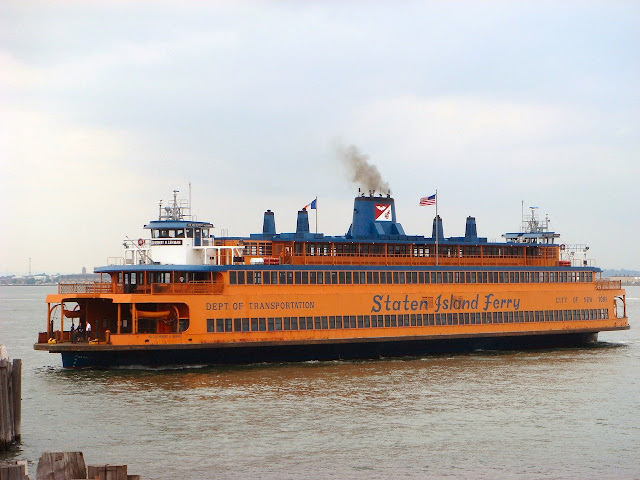













































































































































































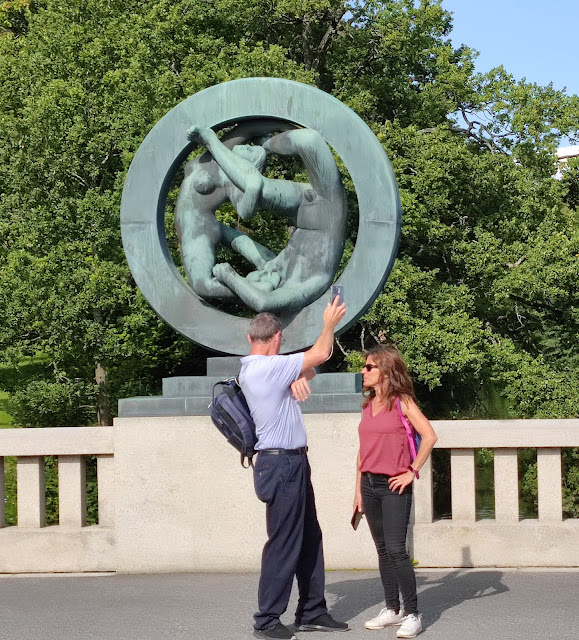




















































































































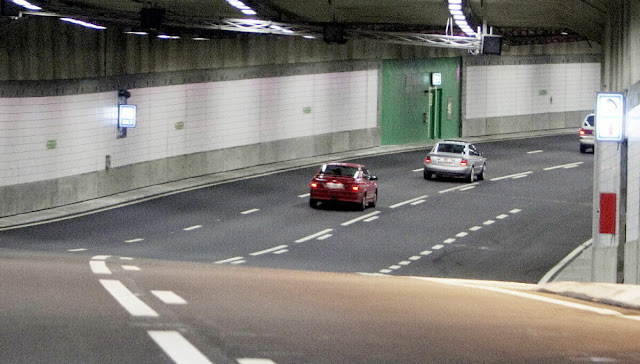

.jpg)
















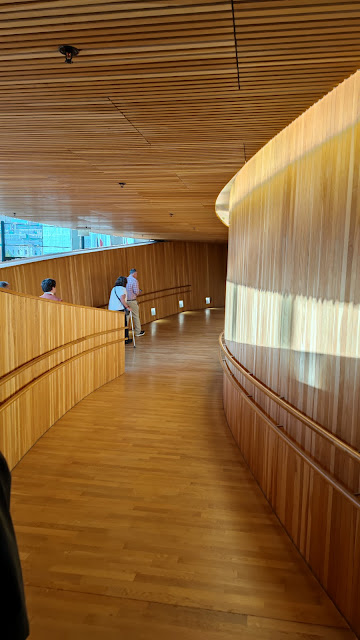























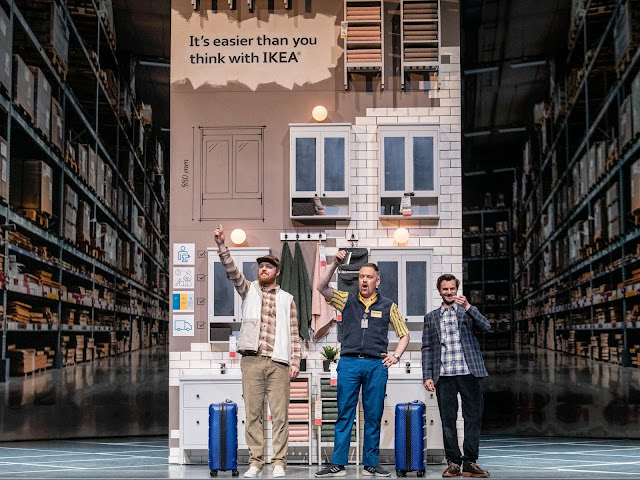

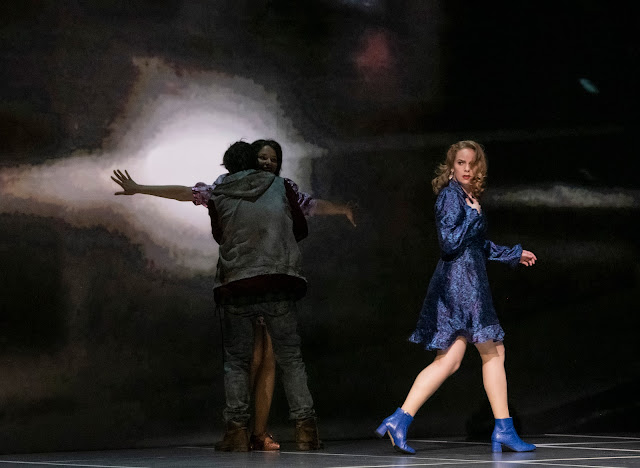























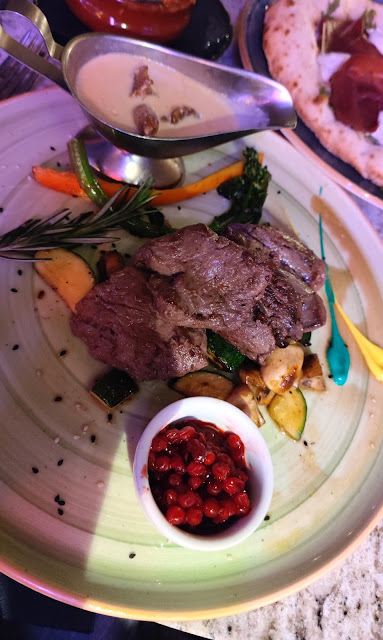

















No comments:
Post a Comment
Don't be shy: leave your comments :)